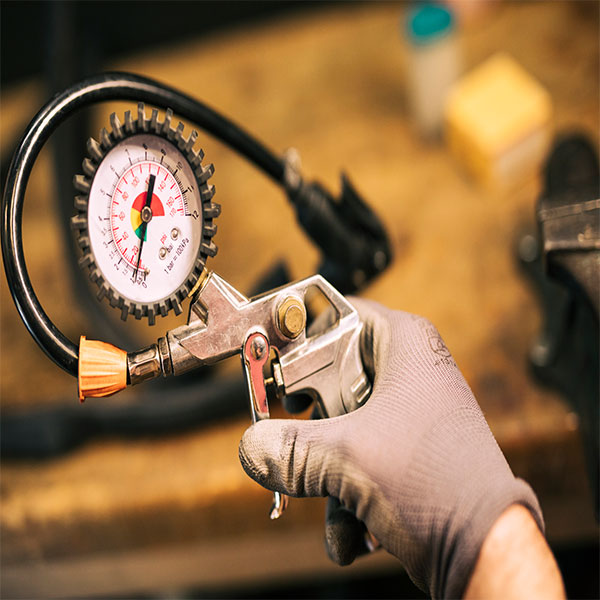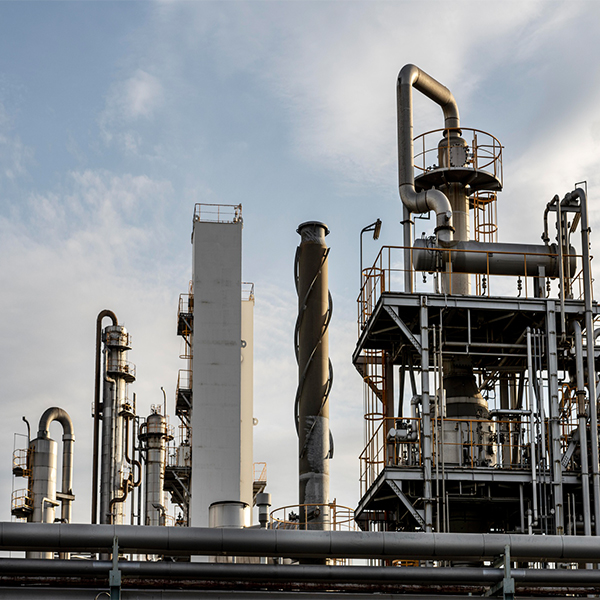Compressed air is widely used in industrial applications, often regarded as a utility similar to water or natural gas. These systems are essential for powering machinery, tools, and various other tasks within a facility.
If you want to harness the power of compressed air for your operations, a compressed air system can provide the energy needed to operate pneumatic tools and other equipment. In this introduction, we will cover the fundamentals of compressed air systems and their benefits.
What Is a Compressed Air System?
A compressed air system consists of a network of equipment that generates and distributes pressurized air to operate various machinery and devices, such as automated valves, slide gates, and diverters. This technology compresses air by reducing its volume, forcing the air molecules into a smaller space, and subsequently releasing it upon operator command or at a predetermined time. Pressurized air can be used for powering tools, cleaning workpieces, filling containers, and other applications. Additionally, with compressed air energy storage systems (CAES), this energy can even be utilized as a renewable energy source.
At the heart of the system is the air compressor, which is the mechanical device responsible for pressurizing the air. Typically powered by an electric motor, the compressor activates when the storage tank reaches a low pressure or is manually engaged. Compressed air systems primarily operate using two types of air displacement technologies:
- Positive Displacement: This method physically forces air into a confined space by decreasing its volume through specific mechanical movements.
- Dynamic Displacement: This type of compressor accelerates air to high velocities, allowing the energy generated in this process to build air pressure.
Components of a Compressed Air System
A compressed air system includes more than just an air compressor. The key components of a basic system are:
- Air Intake Filter: This device captures airborne particles like dust, pollen, and mold before they reach the compressor.
- Air Compressor: This machine converts power—typically from an electric motor, diesel engine, or gasoline engine—into kinetic energy by compressing and pressurizing air, which can then be released in quick bursts. Common types include reciprocating, rotary screw, and rotary centrifugal compressors.
- Aftercooler: This component cools the system’s lubricant and discharged air.
- Air Receivers: These storage tanks provide compressed air capacity to meet peak demand and help regulate system pressure.
- Air Dryer: This device removes condensation from compressed air to protect the system from damage.
On average, compressed air systems can last between 10 to 15 years, with the main causes of premature failure being improper installation and lack of maintenance.
Simple Tips for Maintaining Your Compressed Air System
To keep your compressed air system running efficiently, it is recommended to have it professionally serviced at least once a year. Here are some maintenance tips:
Keep Air Filters Clean
Regularly cleaning air filters can enhance the performance of your compressor, lowering electricity use by 5-15%. Neglecting filter maintenance can lead to clogs, resulting in pressure drops and increased workload on the compressor. Aim to change your filters every three to six months and conduct regular inspections.
Check Your Drain
Ensure that drain traps are functioning properly and that the lines are clear to accommodate continuous airflow. It’s crucial to treat condensate before draining it, as it may contain compressor oil. Additionally, check that your treatment units are operational and that you have replacement service kits handy to minimize downtime during maintenance.
Monitor Your Oil
Like a vehicle, an air compressor requires regular oil changes to avoid engine damage. Regularly check oil levels and add oil as needed. During these checks, inspect for any oil leaks and address them promptly. Follow the manufacturer’s recommendations for oil and filter changes to maintain optimal performance.
Be Aware of Warning Signs
Pay attention to warning signs such as unusual noises, overheating, excessive vibrations, or belt slippage. If your system operates louder than usual, it may have issues such as loose parts, poor mounting, or malfunctioning components. Likewise, if you notice overheating, frequent shutdowns, oily discharge, or loss of pressure, it’s time to schedule maintenance with a professional.
Regular maintenance is essential for your compressed air system to function effectively and avoid potential problems.











